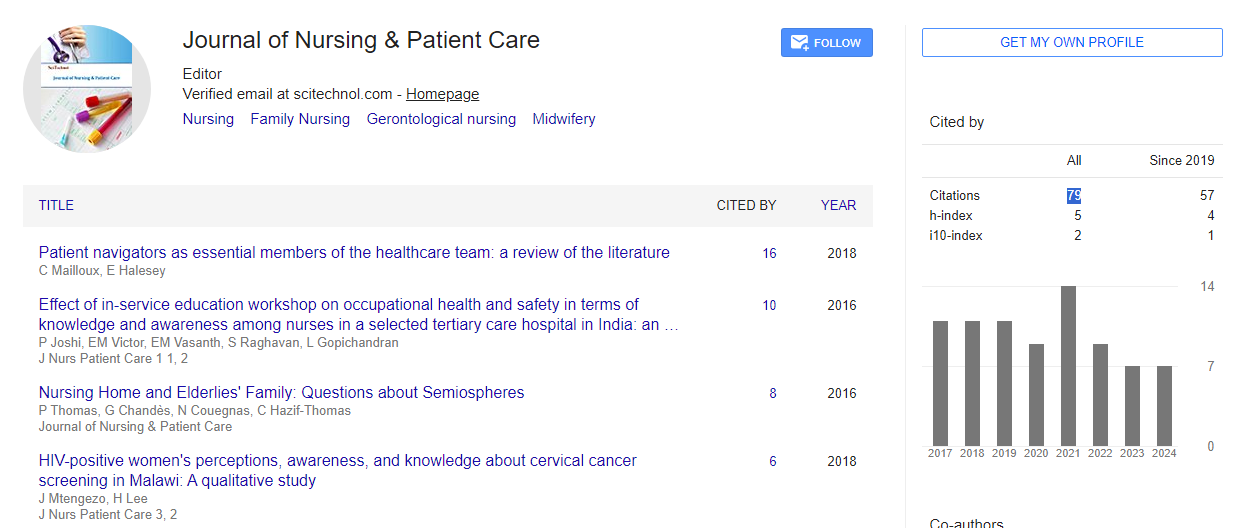Prognosis of functional capability after telescopic femoral intramedullary rodding in patients with osteogenesis imperfecta type IV: A systemic review
Fizza Hassan, Rabia Noureen and Aamna Khan
Abbasi Shaheed Hospital, Pakistan
Rawalpindi Medical College, Pakistan
: J Nurs Patient Care
Abstract
Background: Osteogenesis imperfecta is a group of genetic bone disorder of significant clinical variability secondary to mutations in the genes that code for type I pro-collagen. Major clinical characteristics of OI are bone fragility, osteopenia, variable degrees of short stature, and progressive skeletal deformities. The severity of the disease influences the ability to walk. Therefore it is important for physicians, patients, and the patients’ parents to gain insight into the severity and classification of the disease and the influence of disease-related characteristics on the prognosis for walking. Objectives: Intramedullary strengthening of the fragile bones of Osteogenesis imperfecta by rodding results in great benefit on the affected individual. Search Method: The following electronic databases were searched up to October 2017: CENTRAL (in the Cochrane Library), PubMed, and Science Direct, Scopus. In addition, we searched conference proceedings and reference lists of included studies. No language restrictions were applied. Selection criteria: Case reports, interventional trials, Quasi-RCT, systemic review archives, and other studies that included a clearly defined comparator group were included. The studies investigated the surgical intervention of femoral intramedullary rodding, and improvement in functional ability and quality of life from the year 2000 to 2017. Data analysis and Collection: Screening of citations, data extraction and validation, and assessment of the risk of bias was combined efforts of both authors. Conclusion: Rodding is a sign of disease severity. In general, intramedullary rodding in the lower extremities is primarily indicated in the most severe types to stabilize the bone and to correct deformities. Early closed rodding has improved the early management of the disease without causing any ill effects. Because no randomized clinical trials have been performed for ethical reasons, the improvement of possibilities for ambulation after intramedullary rodding of the lower extremities remain questionable. Several authors state that intramedullary rodding of the legs improved the possibility for ambulation and expanding intramedullary rods reduce incidence of deformity, fractures, and increase walking capability, whereas others found no differences in patients who did and did not receive intramedullary rodding in the age of first achieving motor milestones and the ability for walking in later life. After intramedullary rodding of the legs was performed, functional ability, especially in the preexisting milestones, improved in patients with type III and IV, whereas in patients with type I, walking ability improved. It has been reported that in type IV, even when ambulation is achieved, walking is frequently lost in the second decade of life because of .progressive spinal deformity, decreased motivation in physical therapy and the increasing use of a wheelchair
Biography
Fizza Hassan is a Final Year Student at Karachi Medical and Dental College, affiliated with Karachi University. She has been a keen researcher since High School and took part in many scientific projects at the city level. She has attended several national and international seminars and conferences. She has taken part in many types of research successfully published in international journals and many are ongoing. She is looking forward to a bright future in a medical career.
E-mail: fhasan2010@hotmail.com
 Spanish
Spanish  Chinese
Chinese  Russian
Russian  German
German  French
French  Japanese
Japanese  Portuguese
Portuguese  Hindi
Hindi 